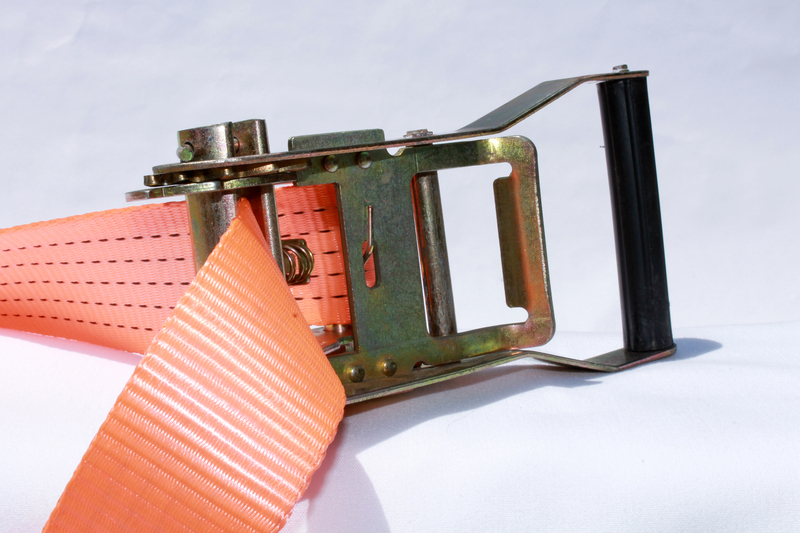Preservation Techniques for Sofas: Expert Long-Term Storage Recommendations
Posted on 04/06/2025
Preservation Techniques for Sofas: Expert Long-Term Storage Recommendations
Sofas are a significant investment in comfort, style, and function for any home or office. Whether you're moving, downsizing, or simply needing to store your sofa for an extended period, proper sofa preservation techniques are essential. Without the right approach, you may face issues such as fabric damage, structural warping, or unpleasant odors. In this comprehensive guide, we share expert long-term storage recommendations to ensure your couch remains in pristine condition until you're ready to use it again.
Why Is Long-Term Sofa Preservation So Important?
Sofas are more than just furniture--they are often a focal point of your living space. Neglecting proper storage approaches for sofas can result in:
- Mold and mildew growth due to trapped moisture
- Insect infestation leading to irreparable damage
- Fabric fading or discoloration from exposure to light and oxygen
- Structural warping caused by improper positioning
- Unpleasant odors absorbed from the storage environment

Top Preservation Techniques for Sofas for Long-Term Storage
1. Clean and Prepare
*Thorough cleaning is the cornerstone of successful sofa storage.* Before you even consider wrapping or moving your sofa into a storage unit, follow these cleaning guidelines:
- Vacuum every crevice: Use upholstery attachments to remove dust, pet hair, crumbs, and other debris.
- Treat stains: Use a fabric-appropriate cleaner for upholstery, and a leather conditioner for leather sofas. Allow the surface to dry thoroughly.
- Deodorize: Sprinkle baking soda on the sofa, let it sit for 15 minutes, then vacuum it off to remove lingering odors.
- Disassemble if possible: Remove legs, cushions, and any detachable pieces. Wrap these parts separately to reduce stress on the structure during storage.
2. Choose the Right Storage Environment
The storage facility you pick directly impacts your sofa's condition after months or years in storage.
-
Climate-Controlled Storage Units: Fluctuations in temperature and humidity can wreak havoc on both fabric and wooden frames.
Opt for climate-controlled units to protect your sofa against extreme highs, lows, and condensational moisture. - Clean, Dry, and Well-Ventilated: Moist environments invite mold and mildew. Make sure your storage space has proper airflow and no visible signs of dampness.
- Safe from Pests: Ask about pest control measures to prevent rodent or insect damage.
- Elevated Storage: Place pallets or furniture coasters beneath your sofa to keep it off the ground, avoiding water or moisture damage in case of leaks or floods.
Key Takeaway: Never store a sofa in a basement, garage, or any area prone to humidity and temperature swings.
3. Wrap Your Sofa with the Right Materials
Protecting your sofa from dust, light, and accidental scrapes is vital. Avoid using plastic covers directly on the fabric, as they can trap moisture and encourage mildew.
- Use furniture blankets or cotton sheets: These allow the furniture to breathe while keeping dust off.
- Wrap legs and wooden parts: Bubble wrap or foam pads prevent scratches or dents during handling.
- No plastic directly on upholstery: If needed for extra protection, use plastic wrap over a breathable layer only.
4. Positioning for Preservation
How you position your sofa in storage can influence its shape and durability over time.
- Store sofas upright and flat: Always keep your sofa in its normal upright position. Avoid placing it on its ends or stacking items atop it.
- Allow air circulation: Do not press couches too tightly against walls or other furniture. Leave a small gap for ventilation.
- No heavy stacking: Placing boxes or furniture on your sofa can distort cushions and weaken the frame.
5. Sofa-Specific Long-Term Storage Tips
Different sofa materials require specialized attention.
For Fabric Sofas:- Use a moisture absorber (like silica gel packets) inside storage coverings.
- Rotate cushions occasionally if possible to maintain their shape.
- Check fabric-specific care instructions for additional protective sprays.
- Treat with a leather conditioner before storage to prevent cracking.
- Store away from direct sunlight even in storage, as UV rays accelerate fading.
- Wrap loosely in a cotton sheet--leather needs to breathe.
6. Regular Maintenance During Storage
If you plan to store your sofa for many months or even years, periodic checkups are key to long-term sofa preservation.
- Every 3 to 6 months: Check for signs of moisture, mold, pests, or material degradation. Adjust coverings or environment as needed.
- Re-freshen cushions: If feasible, rotate or fluff cushions during checkups.
- Maintain climate controls: Replace dehumidifiers or silica gel packs if they're saturated.
Common Mistakes to Avoid When Storing Sofas Long-Term
- Direct plastic wrapping: Traps moisture against fabrics and leather.
- Storing in damp areas: Basements and sheds are not ideal due to humidity and pests.
- Stacking objects on sofas: Leads to permanent indentations and frame bending.
- Ignoring periodic checks: Small issues can become big problems if unchecked for months.
- Skipping the cleaning step: Even minor debris or stains can turn into stubborn, set-in problems after months in storage.
Expert Answers: Frequently Asked Questions
How long can a sofa be safely stored?
With proper preparation and a climate-controlled setting, sofas can be stored for several years without deterioration. The key is regular monitoring and maintenance.
Can I store my sofa in my garage?
Garages aren't recommended for long-term storage due to dramatic temperature swings and exposure to moisture and pests, all of which can ruin upholstery and frames.
What's the best way to protect sofa cushions in storage?
Wrap each cushion separately in breathable fabric and store flat. Rotate occasionally to avoid misshapen foam.
Do all sofa storage tips apply to sectionals?
While most sofa storage preservation techniques apply, sectionals require careful labeling and wrapping of each piece. Consider a layout diagram to make reassembly easier.

The Ultimate Checklist: Long-Term Sofa Storage Preparation
- Vacuum and clean every part of the sofa
- Treat and dry thoroughly before storage
- Disassemble where possible
- Choose a climate-controlled, secure, and elevated storage unit
- Wrap each part with breathable materials
- Avoid stacking or over-crowding
- Label parts for easy identification
- Periodically inspect while in storage
Conclusion: Protect Your Investment with Proven Sofa Preservation Strategies
Preserving your sofa in long-term storage requires planning, attention to detail, and ongoing care. By following these expert recommendations for sofa storage and preservation, you'll ensure your prized couch remains clean, sturdy, and attractive--ready to reclaim its place in your living room when the time comes. Remember, the cost and effort of proper long-term sofa storage techniques are minimal compared to the expense and disappointment of repairing or replacing a neglected piece.
Take the time to store your sofa right--the investment is more than worth it!



